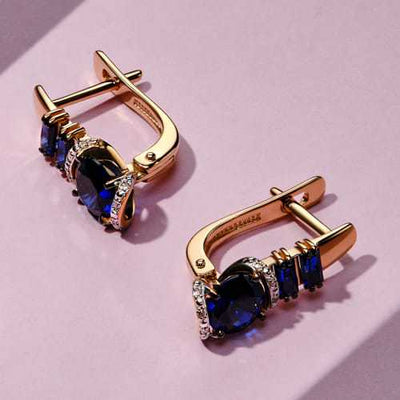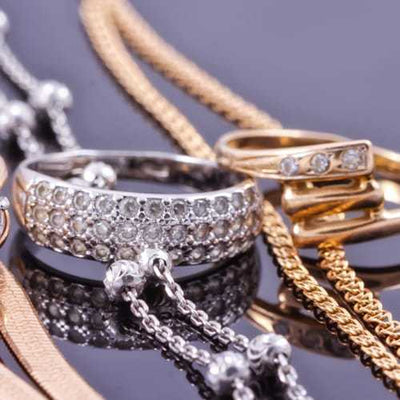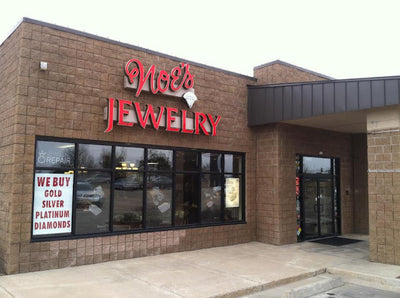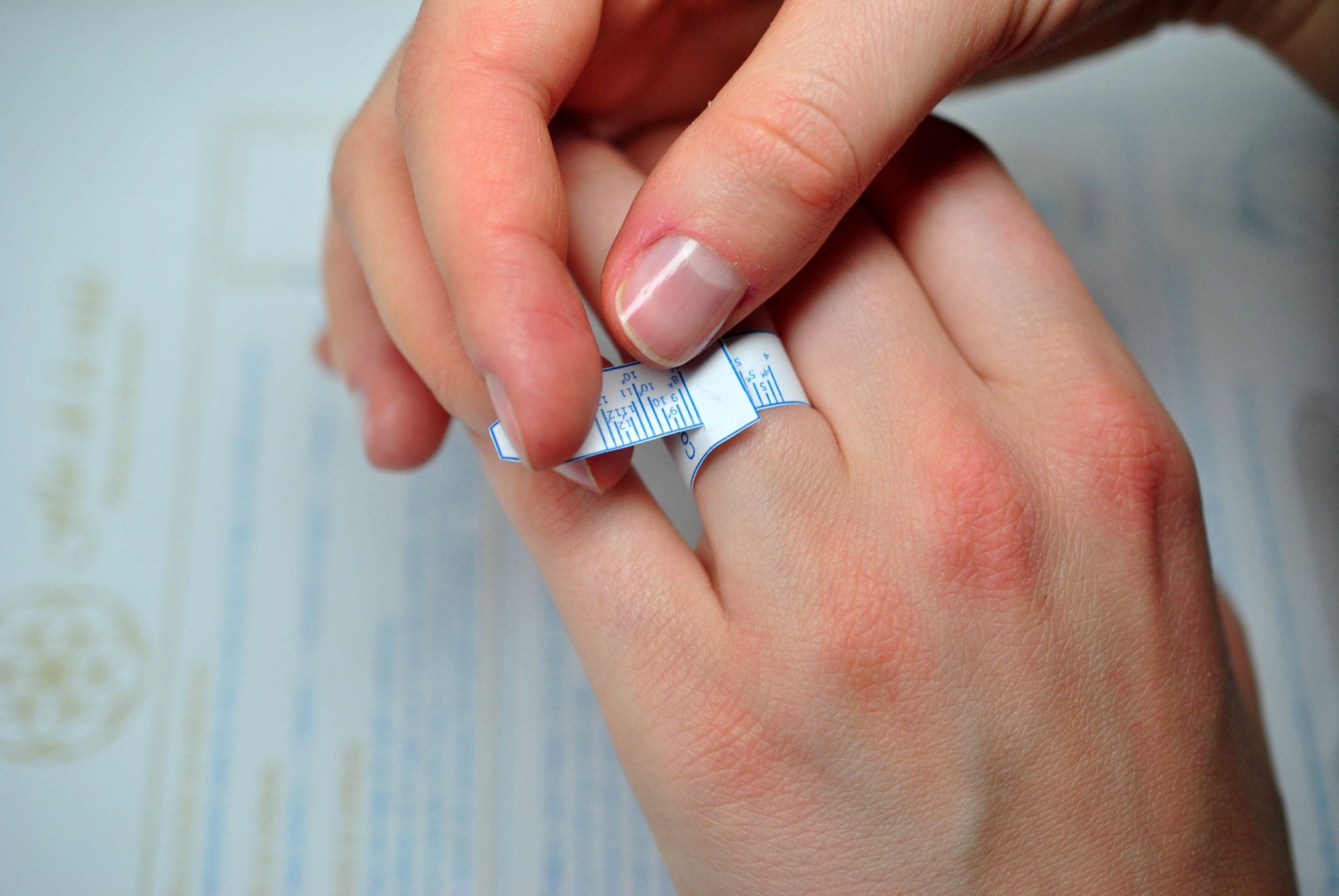When it comes to picking out a perfect engagement ring, size is everything. There’s nothing more frustrating than falling in love with a ring, only to find out it doesn’t fit correctly once you put it on your finger. So, how do you know what ring size you are? And what should you do if you’re between sizes?
If you’re not sure what size ring to buy, don’t worry—you’re not alone. In fact, picking the perfect ring size is a common question that jewelry shoppers have because many do not know their ring size—especially those who have gone through life not wearing anything on their left ring finger.
Here’s a quick ring sizing guide to help you make sure your ring purchase will fit perfectly.
What Is a Ring Size?
Ring size is determined by measuring the inner circumference of the ring in millimeters. Like clothing, ring sizes follow a standard scale from jeweler to jeweler, although they can vary slightly from one brand or designer to another. The most common sizes are 6, 7, 8, and 9, though women may wear sizes lower than 6, while men’s rings tend to run in larger sizes of 8 to 14.
While it would seem that your ring size would be similar to your shoe size in that it stays the same over time, this is actually not true. In fact, a lot of factors can go into what size of ring you are, including brand, material, and whether the diameter of your finger has changed or not.
For men’s rings specifically, these metal wedding bands can be made with one of two fits: comfort or standard. A standard fit ring is flat on the inside, with the ring’s entire backside against your finger. The inside of these rings is usually pretty smooth and can be made with white gold or platinum.
On the other hand, comfort fit rings for men are made from ceramic, titanium, or tungsten. The ring's edges are rounded up so that the outer part of the band is more comfortable around the ring finger. One downside to comfort fit rings is that they tend to be made with materials that cannot be resized later on, making it that much more important to find the right size before making a large jewelry purchase.
Knowing the common ring sizes can help to make your search for the perfect fit that much easier. Now it’s time to figure out how to measure your ring size, which we will discuss below.
How Do You Know What Size You Are?
There are a few different ways to measure your ring size, including measuring your finger with a ruler or by using a ring sizing chart. You can also visit a local jeweler and have them measure your finger for you. However, if you can’t make it to the jewelry store, there are still plenty of options for finding your ring size at home.Measuring Your Finger
First, try wrapping your finger with a flexible ruler or tape measure. Once you have your measurement, refer to this ring size chart to find your corresponding size:
| Ring Size | 3 | 3.5 | 4 | 4.5 | 5 | 5.5 | 6 | 6.5 | 7 | 7.5 | 8 | 8.5 |
| Circumference Measurement (mm) | 44.2 | 45.5 | 46.6 | 48 | 49.3 | 50.6 | 51.8 | 53.1 | 54.4 | 55.7 | 56.9 | 58.2 |
| Ring Size | 9 | 9.5 | 10 | 10.5 | 11 | 11.5 | 12 | 12.5 | 13 | 13.5 | 14 | 14.5 |
| Circumference Measurement (mm) | 59.5 | 60.8 | 62.1 | 63.3 | 64.6 | 65.9 | 67.2 | 68.4 | 69.7 | 71 | 72.3 | 73.5 |
You can also find charts online that allow you to match up a ring that already fits your finger to a corresponding size. However, keep in mind that your left and right ring fingers can be sized differently, so this method is better for a more general measurement.
If you don’t have a flexible tape measure, you can also use a string, piece of paper, or even dental floss to find your correct ring size. Wrap the paper, string, or floss around your finger and mark where the two ends overlap. Then, measure the distance to the marking with a ruler.
What Should You Do If You Are Between Ring Sizes?
If you’re between sizes, it’s usually best to size up rather than down, as it’s easier to adjust a ring that’s too big than one that’s too small. You may even go back and forth between two sizes; for example, your hands can swell up on hot days, making your ring size slightly larger. With this in mind, it’s best to buy the bigger size if you’re between two sizes.
As you look at ring sizes, you’ll also want to keep the width of the ring in mind. We recommend choosing a ring with a wider band if you have wider fingers. This will ensure that the ring is comfortable to wear and won’t look too small on your finger.
Additionally, choosing the bigger size makes it easier to resize the ring later. Most jewelers offer resizing services, so if you end up buying a ring that’s too big, they can make adjustments a lot more easily than if the ring is too small.
How Are Rings Sized?
Ring sizing will vary depending on whether you need to go up or down in size. To make a ring larger, the bottom of the ring—the shank—is cut open. Then, the ring is pulled apart just enough to add a metal bridge to fill the opening. The jeweler solders the ring, meaning the metal will be heated to its melting point so it can be remolded, which helps to preserve the thickness and quality of the ring’s band.
The opposite is done to make a ring smaller. The shank is cut, and then a jeweler will take out the proper amount of metal before joining the two sides together and soldering the ring closed.
Can All Rings Be Resized?
Keep in mind that some rings can’t be resized at all. This is because jewelers can only work with certain metals, such as silver, gold, and platinum, when resizing a ring. There are other variables, as well, that make certain rings unable to be resized. These may include:
- Metal Type: As we mentioned above, rings made of tungsten, ceramic, or titanium cannot be resized because the material is too hard. Additionally, rose gold is another material that can’t because it’s known to crack easily under extreme stress.
- Design Features: Certain features, such as stones that are set all the way around the band, prevent a ring from being resized. This is because there is no bare metal for a jeweler to work with, so the resizing process would only destroy the ring.
- Large Ring Size Adjustment: Most jewelers can only adjust a ring up to two or three sizes smaller or larger. Attempting to adjust the ring anymore could lead to series damage and potentially affect other elements of the ring, like the gemstone in its setting.
Does It Cost to Have a Ring Sized?
The cost of getting a ring sized can vary from jeweler to jeweler. Many jewelers are happy to measure your finger for free, but resizing services for rings that have already been purchased usually cost money. In addition, resizing prices can differ depending on certain variables, like metal type, ring width, the number of stones or diamonds the ring has, and how many sizes it needs to be adjusted.
In general, if you need to get a ring resized, expect to pay anywhere between $20 and $300. While resizing services may become pricey for more sophisticated ring designs, we highly recommend leaving this service to a professional, since it’s easy to make a mistake and damage the ring if you attempt to resize it on your own.
Whether you’re shopping for an engagement ring, wedding band, or just a special treat for yourself, make sure you know your ring size before you buy. With a little bit of planning, you can be sure your ring will fit perfectly.
At Noe’s Jewelry, we offer rings in various sizes, so you’re sure to find the perfect one for you. Visit our jewelry store in Raymore, Missouri, or contact us at 816-322-7227.






